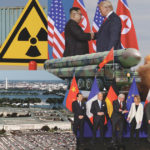Research Analyst Samuel Hickey was interviewed on Arab Talk, a San Francisco radio broadcast focusing on events in the Middle East, where he spoke about his recent article, “How Iran’s Research Reactors Prove the Nuclear Deal is Still Working,” which appeared in the Bulletin of the Atomic Scientists.
Fact Sheet: The Civilian and Military Characteristics of Plutonium
Nuclear weapons require fissile materials, that is certain isotopes of uranium and plutonium, to sustain explosive fission chain reactions. Plutonium for weapons is normally obtained by reprocessing. Reprocessing is the separation of plutonium from irradiated uranium, often in the spent fuel from a nuclear reactor. The process was originally developed in the United States as […]
Fact Sheet: Uranium Enrichment: For Peace or for Weapons
Centrifuge technology is at the heart of the enrichment process, and the line between its uses for civilian and military purposes is hard to distinguish. Once a country has mastered this technology, the centrifuges can be reconfigured into cascades to either produce fuel for an electricity-generating nuclear reactor or the 25 kilograms of weapon-grade uranium […]
Fact Sheet: The Nuclear Fuel Cycle
Nuclear energy exhibits great potential as a low-carbon energy source, but carries inherent risks of diversion to weapons-related uses. At its core, the nuclear fuel cycle includes the various industrial processes associated with the production of electricity from uranium in nuclear reactors. However, some of the industrial processes more easily open the door to produce […]
Op-ed: How Iran’s research reactors prove the nuclear deal is still working
Research Analyst Samuel Hickey wrote an op-ed in the Bulletin of the Atomic Scientists on how the JCPOA could set a new gold standard for ensuring civilian nuclear programs do not pose proliferation threats. “An underexamined success story from the 2015 Iran nuclear deal negotiations is the effective blocking of Tehran’s ability to collect plutonium […]

